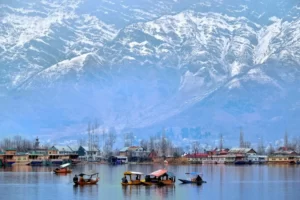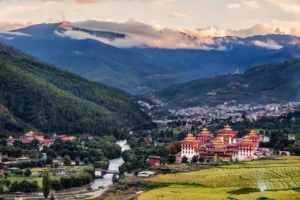Bali is renowned for its lush landscapes, vibrant culture and pristine beaches and stands as an exotic paradise that captivates travelers year-round. However, understanding the island’s diverse climate and seasonal variations is essential for planning a perfect getaway.
Choosing the Best Time to go to Bali, Indonesia
In this comprehensive guide, we will explore the four distinct seasons in Bali and help you decide the best time to go to Bali based on your preferences and interests.
April to September in Bali, Indonesia
Bali’s dry season spanning from April to September is the most popular time for tourists. The weather during these months is characterized by minimal rainfall, sunny skies and lower humidity levels making it ideal for various outdoor activities.
- Temperature: The temperatures range from 24°C to 32°C (75°F to 90°F), providing a comfortable and warm climate.
- Rainfall: Rainfall is minimal during this period, contributing to clear skies and allowing visitors to explore Bali’s attractions without interruption.
- Activities: The dry season is perfect for sunbathing and enjoying Bali’s world renowned beaches such as Kuta, Seminyak and Jimbaran.
- Water Activities: Clear waters and calm seas make it an excellent time for snorkeling, scuba diving and other water sports.
- Cultural Festivals: Explore Bali’s rich culture during this season with various festivals and events taking place including Galungan and Kuningan.
Pros
- Ideal Weather: Sunny days and pleasant temperatures make it the perfect time for outdoor adventures.
- Cultural Events: Experience Bali’s vibrant culture through festivals and ceremonies.
- Water Clarity: Excellent visibility for underwater activities like diving and snorkeling.
Cons
- Crowds: The dry season attracts a higher number of tourists, leading to crowded attractions and higher prices for accommodations.
- Higher Prices: Due to increased demand, prices for flights, accommodations and activities may be higher during this peak season.

October to November & February to March in Bali, Indonesia
The transitional periods between the dry and wet seasons known as the shoulder seasons offer a balanced mix of favorable weather and fewer crowds. These months can be an excellent compromise for those seeking a pleasant climate without the peak-season hustle and bustle.
- Weather: Similar to the dry season with temperatures ranging from 25°C to 33°C (77°F to 91°F).
- Rainfall: While there might be occasional rain, it is generally less frequent and intense compared to the wet season.
- Activities: Enjoy outdoor activities with a lower chance of rain, making it a great time for trekking, cycling and sightseeing.
- Cultural Immersion: Participate in local ceremonies and experience Bali’s unique culture without the crowds.
- Budget-Friendly: Accommodations and flights may be more reasonably priced compared to the peak season.
Pros
- Balanced Weather: Enjoy a mix of sunny days and occasional rain, providing a refreshing atmosphere.
- Reduced Crowds: Experience popular attractions with fewer tourists, allowing for a more relaxed visit.
- Affordability: Lower prices for accommodation and activities compared to the peak season.
Cons:
- Occasional Rain: While less frequent than the wet season, there is still a chance of rain so it’s advisable to pack accordingly.
- Limited Festivals: Some cultural events may not take place during the shoulder seasons.

December to January in Bali, Indonesia
Bali’s wet season occurring from December to January, brings heavier rainfall and increased humidity to the island. While this period is considered the low season, it has its own unique charm and advantages for certain types of travelers.
- Weather: Similar to the dry season with temperatures ranging from 25°C to 32°C (77°F to 90°F).
- Rainfall: Heavy rainfall and occasional thunderstorms are common during the wet season.
- Activities: Take advantage of the rain to indulge in Bali’s renowned spa and wellness offerings.
- Cultural Experiences: Despite the rain you can still explore cultural sites and witness local ceremonies, albeit with fewer crowds.
Pros
- Lush Landscapes: The rain transforms Bali into a lush, green paradise, creating a picturesque landscape.
- Lower Prices: Accommodations and activities are more budget-friendly during the low season.
- Unique Atmosphere: Embrace the island’s tranquility and unique atmosphere during quieter months.
Cons
- Heavy Rainfall: Daily downpours and occasional flooding may affect outdoor activities and travel plans.
- Limited Water Sports: Water conditions may not be suitable for certain water sports during heavy rainfall.

Check Out: Best Places To Visit In South Carolina In December
January to March in Bali, Indonesia
The monsoon season in Bali typically extends from January to March, characterized by heavy rainfall and high humidity. While this is the least favorable time for many travelers, it does offer a distinct experience for those seeking a more secluded and serene atmosphere.
- Weather: Similar to the wet season with temperatures ranging from 25°C to 32°C (77°F to 90°F).
- Rainfall: Intense and frequent rainfall with the possibility of floods in certain areas.
- Activities: Visit temples, museums and other cultural sites during breaks in the rain.
- Relaxation: Embrace the slower pace and relax in Bali’s tranquil environment.
Pros
- Seclusion: Experience Bali with fewer tourists allowing for a more intimate connection with the local culture.
- Affordability: Prices for accommodations and activities are at their lowest during the monsoon season.
Cons
- Heavy Rainfall: Continuous and heavy rain may limit outdoor activities and disrupt travel plans.
- Limited Water Activities: High waves and strong currents make water activities unsafe during the monsoon season.

How To Reach Bali
By Air
Ngurah Rai International Airport also known as Denpasar Airport is located in Tuban, South Kuta approximately 13 km south of Denpasar, the capital of Bali.
International Flights: Bali is well-connected to major international airports with direct flights available from cities like Singapore, Kuala Lumpur, Bangkok, Sydney, Melbourne, Hong Kong, Tokyo and many more. Airlines such as Garuda Indonesia, Singapore Airlines, AirAsia, Emirates and Qantas operate regular international flights to Bali.
Domestic Flights: Domestic flights connect Bali with other major cities in Indonesia, including Jakarta, Surabaya, Yogyakarta and more. Airlines like Garuda Indonesia, Lion Air and AirAsia offer frequent domestic flights to Bali.
By Sea
Ferries: Ferries are available from various Indonesian islands to Bali with the most common departure points being Java (Gilimanuk Port) and Lombok (Padang Bai Port). Ferries from Java operate from Ketapang (East Java) to Gilimanuk (West Bali). The journey offers scenic views and takes about 30-45 minutes.
Cruise Ships: Bali is a popular destination for cruise ships and several cruise lines include it in their itineraries. Cruise terminals such as Benoa Harbor in Bali serve as docking points for cruise ships.
Check Out: Coldest Places In India During The Winter Season
Bali Travel Tips
Visa Requirements: Check the visa requirements for Indonesia, as some nationalities may need a visa on arrival or a pre-arranged visa before entering Bali.
Airport Transportation: Ngurah Rai International Airport is well-connected to major areas in Bali. Taxis, private transfers and ride-sharing services are available for transportation from the airport.
Domestic Travel: If arriving from other parts of Indonesia consider using domestic airlines for convenience and efficiency.
Book in Advance: Especially during the peak tourist season, it’s advisable to book flights and accommodations in advance to secure the best prices and availability.
Weather Considerations: Be aware of Bali’s weather conditions when planning your trip, as certain seasons may impact travel plans especially during the monsoon season.
Conclusion
Choosing the best time to go to Bali depends on your preferences, whether you seek vibrant cultural experiences, outdoor adventures or a serene escape. The dry season from April to September is ideal for sun-seekers and water enthusiasts while the shoulder seasons provide a balanced mix of good weather and reduced crowds. The wet season and monsoon season, although less popular offer unique opportunities for budget travelers and those seeking a more intimate experience.
Check Out: Best Places To Visit In December In India



















